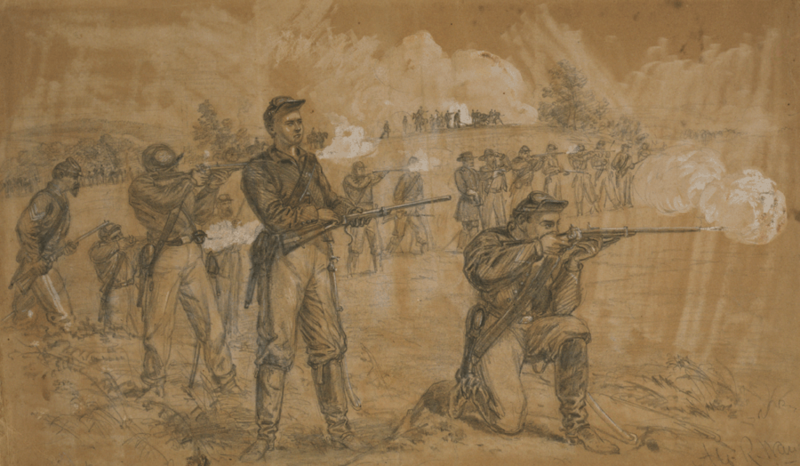When we last left off, Salathiel’s regiment had just joined the famous Wilder’s Brigade and his younger brother Battle had just died of disease. After about a month of extensive drills and training in their new role as mounted infantry, Wilder’s Brigade was called upon for a couple of minor skirmishes. Then on June 23, 1863, Union General Rosecrans embarked on what would later be called the Tullahoma Campaign.
Although very significant in terms of advancing the Union front, these battles are overshadowed in the history books by Vicksburg and Gettysburg, which occurred at the same time.
Rosecrans needed to move troops from Murfreesboro, where they had spent the winter, to Tullahoma, about 30 miles to the southeast. This is a very hilly part of Tennessee, There were four “gaps” through the stony hills by which his forces could pass through to Tullahoma. He decided to advance troops through all four gaps simultaneously, but three of them were decoys and only one was going to be the true point of passage for his Army.
He assigned Wilder’s Brigade to lead the assault through his chosen passage – Hoover’s Gap. Wilder picked the 17th Indiana Regiment to go first, followed by Salathiel’s 123rd Illinois. They left in the early morning hours of June 24th in a pouring rain. At daylight, they encountered rebel troops but rather than engage them, Wilder’s Regiments took off at a full gallop. By nine o’clock, they had outrun all the rebel forces and they set up a defense at Hoover’s Gap. The rebel forces finally caught up, and the two Union regiments were outnumbered twenty to one. Major James Connolly of the 123rd Illinois later wrote:
Our regiment lay on the hill side in mud and water, the rain pouring down in torrents, while each shell screamed so close to us as to make it seem that the next would tear us to pieces. Presently the enemy got near enough to us to make a charge on our battery, and on they came; our men are on their feet in an instant and a terrible fire from the “Spencers” causes the advancing regiment to reel and its colors fall to the ground, but in an instant their colors are up again and on they come, thinking to reach the battery before our guns can be reloaded, but they “reckoned without their host,” they didn’t know we had the “Spencers,” and their charging yell was answered by another terrible volley, and another and another without cessation, until the poor regiment was literally cut to pieces, and but few men of that 20th Tennessee that attempted the charge will ever charge again.

In the meantime, Wilder’s other two regiments plus Captain Lilly’s artillery arrived on the scene. Lilly’s horses were so tired from the run, the men had to haul the artillery guns the last mile to the battlefield.
By nightfall, the rebel troops retreated and Rosecrans was able to move his forces freely through Hoover’s Gap and on toward Tullahoma and Manchester. The Battle of Hoover’s Gap was a huge success and everyone knew that it was Wilder’s Brigade that had made it all possible. The War Department was so impressed (and embarrassed) that they paid for all the Spencer rifles that the soldiers themselves had committed to buy out of their own pockets.
They earned the nickname “Wilder’s Lightning Brigade” after this battle. Among Civil War buffs, this Brigade is one of the most famous of all. Anything associated with them, especially the Spencer rifles, are incredibly collectible and highly sought after.
From Wikipedia:
Tullahoma is considered a “brilliant” campaign by many historians. Abraham Lincoln wrote, “The flanking of Bragg at Shelbyville, Tullahoma and Chattanooga is the most splendid piece of strategy I know of.” Union Cavalry Corps commander David Stanley wrote, “If any student of the military art desires to make a study of a model campaign, let him take his maps and General Rosecrans’s orders for the daily movements of his campaign. No better example of successful strategy was carried out during the war than in the Tullahoma campaign.
What Rosecrans didn’t do, however, was continue his pursuit of Confederate forces after he had secured the middle portions of Tennessee. This gave Confederate General Bragg the opportunity to get reinforcements, setting the stage for the horrible Battle of Chickamauga, the Union’s worst defeat in the Western Theater of the Civil War. And Salathiel was part of it.
